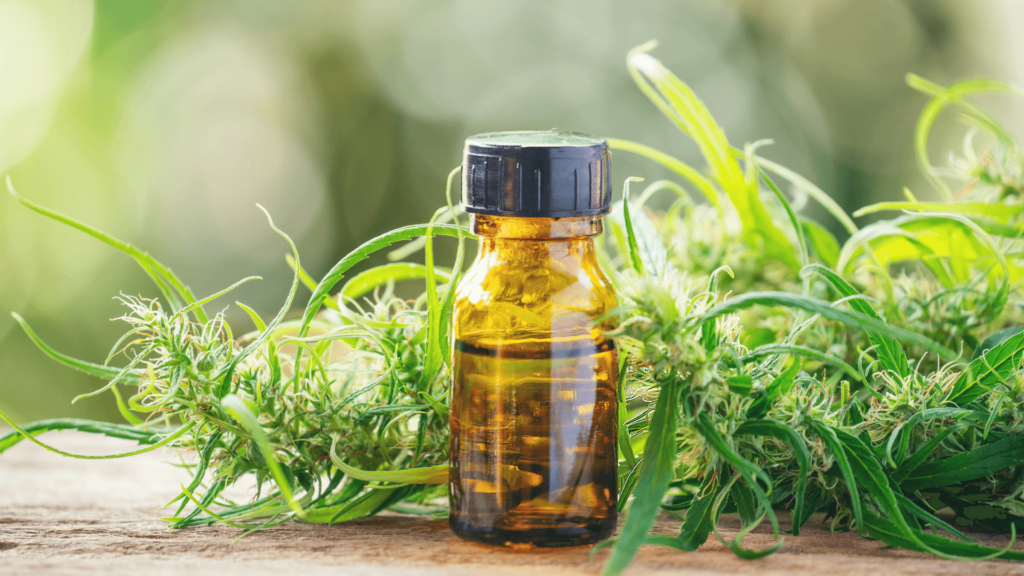The world of cannabis concentrates is filled with terms that can be pretty confusing and overwhelming. You’ve probably seen the words “rosin” and “resin” regularly.
Well, we’re here to guide you through this niche of cannabis culture and to share our excitement and appreciation for “clean weed.”
With just one letter difference, these two products have significant differences. While both are forms of extract from marijuana, the processes used to produce them are fundamentally different.
We’ve researched the ins and outs of rosin so that you don’t have to. This article will guide you through what it is and how to make it yourself.

Rosin is a solvent-free cannabis extract. Unlike other, more common concentrates, it is free of stabilizers and solvents like butane and propane.
If that sounds like gibberish, let us explain: All weed concentrates are drawn from the resinous sap on weed flower’s trichomes using either solvents or heat and pressure.
The former, solvent-based concentrates, are made by mixing, agitating, and then straining frozen buds with chilled alcohol or solvent oil. However, it produces an extract with a low THC concentration and requires an extra purification step to evaporate the volatile solvent.
This is a vital step to make it safe for consumption.
Rosin is a cleaner bud, hash, or kief extract that combines high temperatures and pressure to produce a pure and potent concentrate. However, it has a low yield and requires an expensive procedure to produce it at an industrial level.
When done right, it is a non-destructive process that preserves the flavors and active chemicals (terpenes and cannabinoids, respectively) of the plant. It is free of the harsh residual alcohol or chemical flavors that other processes can’t avoid.
It is beloved in our community as a flavourful, clean, and robust weed concentrate. But be prepared to pay more than other extracts as the process is expensive.
If you’re a musician, the word ‘rosin’ might be oddly familiar. Rosin is used on the bows of violins to create friction against the strings of the instrument. It is an essential part of getting violins to produce music.
However, the year 2015 brought the term into our cannabis orbit. In January of that year, the cannabis grower, dispensary owner, and hashish enthusiast Phil “Soilgrown” Salazar made a happy mistake.
In an attempt to make a mid-grade hash (that was non-full melt and left residue when vaporized) easier to smoke, he pressed it between two sheets of parchment paper with a hair straightener.
During one of his experiments, he applied more pressure than usual for a little longer and noticed oil seeping out of the hash.
Initially, he thought he had made a mistake and pressed the oil back in with the hash. But he couldn’t help his curiosity, so he did it again and tried dabbing the extract.
It was then that he realized he had stumbled upon gold. This new substance tasted better than hash, was full melt, and was extremely powerful.
After a few months of perfecting his extraction technique, Phil shared his findings with the rest of our community and was met with much excitement.
Rosin can be made from various sources to create nuances in the effects.
One fact remains constant with all types of rosin, though: The quality of your extract will only ever be as high as the quality of your source material. Even the most precise technique will yield low-quality rosin if you start with lower-grade weed.
On an industrial scale, rosin production is highly controlled and precise. Giant rosin press machines allow for exact measurement and control of the pressure applied, time-pressed, and temperature of the plates.
Luckily for you, rosin can be easily made at home. Small, easy-to-use rosin presses are available but will cost you a pretty penny. Or you could use a hair straightener that might be a bit more of a challenge to master but is a lot cheaper.
The fundamentals of the process are simple. Cannabis buds (dried or frozen), hash, or kief are sandwiched between parchment paper and two heated plates. Heat and light pressure are applied until oil begins to ooze out.
This is then either collected and stored or dabbed immediately.
Making rosin at home is fun and allows you to do it exactly how you want. You can explore blending buds from different strains or adjusting your pressing technique to get the perfect rosin.
The primary tool you will need is a rosin press. Presses come in all different shapes and sizes. You get manual, hydraulic, pneumatic, and electric presses. Each one has its own charm.
Manual presses are the cheapest but require the most labor, while electric presses are the most convenient. In the middle, you have hydraulic presses that have either a manual pump or pneumatic presses that use air pressure for large presses but are large and bulky.
A popular alternative is a hair straightener because it is more common, cheaper, and discreet.
So to make your own rosin you’re going to need:
Begin by choosing the type of cannabis you want to use, be it dried or fresh flower, kief, or hash. Each one will create a different type of rosin.
If you plan on using weed flower for your rosin, use a strain rich with trichomes, dense structure, and carefully dried or frozen in a clean environment.
Because rosin is such a straightforward, clean process, the effects of any particular strain will directly translate into the effects you’ll experience when dabbing its rosin.
You can combine different strains for mixed concentrate if you’re feeling adventurous. Look for complementary terpenes for a harmonious blend.
Some of our favorite strains for rosin making are Durban Poison, Tangie, Lemon OG, Papaya, Chem #4, and any of the Sours.
This step will depend on the weed you use. If you use hash or kief, you can skip this step and move on to step three.
However, if you want a flavorful, fresh experience using freshly harvested cannabis, this step is for you.
Place your weed in a small container, like a Tupperware, with some dry ice in a freezer for 24 hours.
This will keep the plant alive while drastically slowing down all cellular processes to preserve it.
Put on your heat-resistant gloves.
Set your rosin press or hair straightener to its lowest heat. We’ve found that anything under 300ºF is optimal so that it doesn’t burn the terpenes.
Cut a piece of parchment paper to approximately 4×4″ and fold it in half.
Place your marijuana bud, kief, or hash in the middle of the fold. Make sure you have plenty of space on either side for the oil to seep and remain between the paper.
Place the folded parchment paper between the two heated plates of your rosin press or hair straightener.
Make sure that all your weed fits onto the plates and will get heated and squeezed.
Apply gently increasing pressure for about 3-7 seconds until it sizzles and the oil oozes.
Remove the parchment paper from your rosin press or the plates of your hair straightener.
Unfold the paper and remove the flattened weed. Use a pair of tweezers to remove any excess plant material.
Use a dabbing tool or small spoon to scoop up the rosin and put it into a storage container.
Keep your rosin in a cool, dark, dry place for the best storage. It is still plant matter though, so if it is exposed to moisture, it will mold, and bright light will deteriorate the terpenes.
The world of cannabis concentrates can be a significant learning curve with many new terms and techniques. But this guide will help you appreciate rosins.
They stand out for their unmatched purity and minimalist extracting process.
Or, if this all looks too much like hard work for you, come and visit us at Embarc and browse our range of cannabis concentrates.
Whether you’re enjoying our Apple Tart Live Rosin or making your own blend at home, we hope you feel a lot more like a connoisseur than before.
